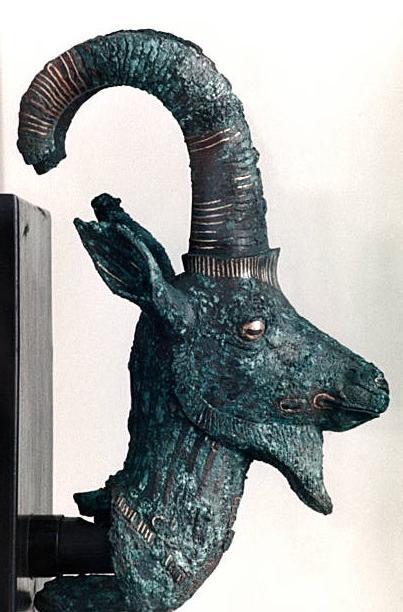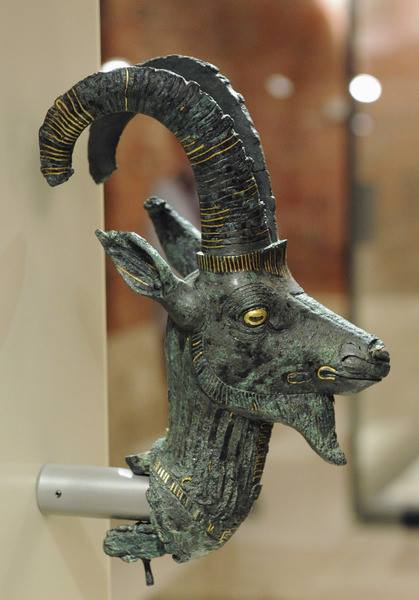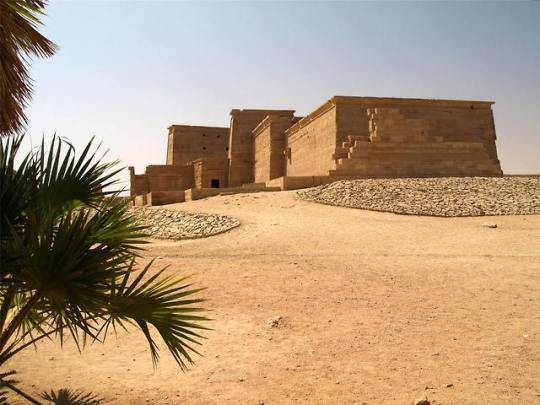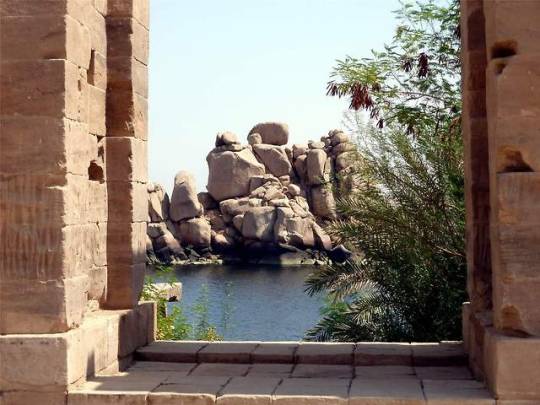Don't wanna be here? Send us removal request.
Photo

Cornerstone of an altar, showing the 19th Dynasty pharaoh Ramesses II “the Great” (r. 1279-1213 BCE) making an offering. Found at Heliopolis; now in the Ägyptisches Museum, Berlin. Photo credit: Wolfgang Sauber/Wikimedia Commons.
437 notes
·
View notes
Photo



Head of an ibex
Head of an ibex probably of a sacred barque. Made of bronze and gold. Third Intermediate Period, 21st Dynasty, ca. 1070-945 BC. Now in the Neues Museum, Berlin.
1K notes
·
View notes
Photo

INTERVIEW: UNESCO ARCHIVES DIGITIZATION PROJECT:
ANCIENT History Encyclopedia has partnered with the UNESCO Archives, which we are very excited about. Our mission aligns very much with UNESCO, wanting to bring about peace and international understanding to the world through cultural heritage and education. We sat down with Mr. Adam Cowling, the Digitization Project Manager to talk about their project and where it is headed. What they do in their archives is absolutely fascinating.
Read More
136 notes
·
View notes
Photo

Head from a Large Statue of a Priest or Dignitary, Egyptian Art
Gift of Egypt Exploration Fund, 1902 Metropolitan Museum of Art, New York, NY Medium: Quartzite
http://www.metmuseum.org/art/collection/search/545108
20 notes
·
View notes
Photo





virtual reconstruction of the Sacred Animal Necropolis at North Saqqara “The site is dedicated to the funerary cult of the sacred animals, and consists of various sanctuaries and three catacombs: the Mother of Apis, Baboon, and Falcon Catacombs. Discovered by W.B. Emery in 1955. By David Vacas Madrid
105 notes
·
View notes
Text
A Queen Uncovered

Queen Ankhnespepy II was a particularly powerful female leader during Egypt’s Old Kingdom. She married not one but two kings during the Sixth Dynasty – Pepy I and Merenre – and she served as regent when her son Pepy II became king at just six years old. Recently, a Swiss-French archaeological mission at the Saqqara necropolis found the top portions of two obelisks, thankfully with inscriptions to help identify them, which would have marked the entrance to Queen Ankhnespepy II’s funerary temple. They are the oldest Old Kingdom obelisk fragments found, and would have stood more than 16 feet tall.
The obelisks weren’t impressive just for their height. The two were made out of granite, a material usually reserved for kings. Any ancient Egyptian who saw them would instantly know the the power and stature of Queen Ankhnespepy II.
2K notes
·
View notes
Photo

Ancient Egyptian wooden spoon with a handle in the shape of a jackal. Artist unknown; ca. 1539-1292 BCE (18th Dynasty, New Kingdom). From Saqqara; now in the Brooklyn Museum.
442 notes
·
View notes
Photo

Recumbent Anubis
Statue of Anubis, god of mummification and the afterlife. Limestone, originally painted black. Anubis is one of the most iconic gods of ancient Egypt.
Temple deposit, Sacred Animal Necropolis, North Saqqara, Memphite Region. Late Period-Ptolemaic Period, ca. 664-30 BC. Now in the Metropolitan Museum.
590 notes
·
View notes
Text

Restitution de Pi-Ramsès, la capitale de Ramsès II
Virtual Reconstruction of Pi-Ramesses
Virtuelle Rekonstruktion von Pi-Ramesse
http://www.artefacts-berlin.de/portfolio-item/the-reconstruction-of-pi-ramesse/
#ramses#ramesses#egyptologie#ancient egypt#egyptology#egypte antique#ancient city#egyptian temple#archaeology#pi-ramesse#pi-ramses#pi-ramesses#piramses#qantir#per ramesses
0 notes
Photo


~ Amulet of Ptah and Sekhmet. Period: Late Period, 25th-30th Dynasty Date: 760–332 B.C. Place of origin: Egypt, Giza
226 notes
·
View notes
Photo


Cat under the chair with a tabby mackerel marking, typical of Felis silvestris lybica (The African wildcat).
Copy of a wall painting from the Tomb of Nakht (TT52). New Kingdom, 18th dynasty, reign of Thutmose IV, ca. 1401-1391 BC. Sheikh Abd el-Qurna, West Thebes. Nina de Garis Davies (1881-1965) Now in the Ashmolean Museum.
4K notes
·
View notes
Photo

Gold signet-ring
Ancient Egyptian signet-ring with a rectangular bezel bearing a cartouche with the name of Amenhotep II flanked by Nile gods Hapi. New Kingdom, 18th Dynasty, reign of Amenhotep II, ca. 1427-1400 BC. Now in the British Museum.
880 notes
·
View notes
Text

Gabriel Lekegian - View of the pyramids and the Great Sphinx. Eclipse of the sun of August 30, 1905
278 notes
·
View notes
Photo

Tutankhamen’s Great-Grandfather And Great-Grandmother
Pharaoh Thothmes IV, and Tiaa, his queen, an incomparably beautiful black granite group, discovered at Karnak and now a treasured possession of the Cairo Museum. The coiffure of the queen, two heavy masses of hair falling down the sides of her face to her breast, calls for special notice. The statue of the king, believed to be a good portrait, shows a powerfully built man in the full vigour of youthful strength. On his head is the royal uraeus, and around his loins the shenti, kept in place by a buckled belt. halftone print, 1923.
343 notes
·
View notes
Photo




Temple of Isis, Philae
The temple of Isis from Philae at its current location on Agilkia Island. The most ancient was a temple for Isis, originally built in the reign of Nectanebo I, 4th century BC.
5K notes
·
View notes
Photo

Dr. James Henry Breasted, his wife Mrs. Breasted, and their son Charles beside the entrance to the great temple, Abu Simbel; the foot of one of the colossi is visible; photograph taken in 1906. The Oriental Institute of Chicago.
1K notes
·
View notes
Photo

Senusret I embraces Amun-Kamutef
Relief depicting king Senusret I embraces god Amun-Kamutef (“Bull of his mother”), detail from the White Chapel of Senusret I, Karnak Temple Complex.
138 notes
·
View notes